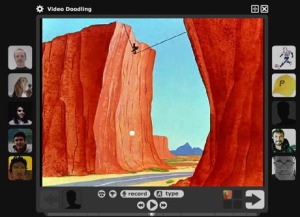 Voicethread is a fabulous tool for a world language teacher for several reasons.
Voicethread is a fabulous tool for a world language teacher for several reasons.
1. It is a performance assessment.
2. It can be differentiated to varying levels and needs.
3. The student is the creator and the audience.
4. It can be viewed publicly.
In my French I class, we completed a unit on the children’s story, Il y a un Alligator Sous Mon Lit (There is an Alligator Under My Bed). The students learned the rooms and furniture of the house, prepositions, fears, and how to compose a message before reading the story. Then they listened, read, watched, and acted out the story through various activities. There were many formative assessments along the way to test acquisition of vocabulary, and the summative assessment was to create a unique story based on the format of Il y a un Alligator Sous Mon Lit.
This assessment showed me what the students are able to do with the language. Rather than testing the students for discrete information, in a test or quiz that shows what they don’t know, they took what they learned and produced the best product they could at their proficiency level.
This class is extremely varied in needs and proficiency level and, I was able to modify the requirements to fit each student. Some students had more requirements than others. I provided templates for certain students, while more advanced students were given less direction. I compacted the past tense for one extremely advanced student and she wrote he story using the preterite and imperfect complete with irregular verbs!! Voicethread allows individual needs to be met on both ends of the spectrum!
After the student creates the Voicethread,they were required to view and comment on all of the other students’ Voicethreads. Because they know their project is public and viewed by their peers, the quality is better.
Using this tool in the classroom enables students to become better equipped to use Web 2.0 in a productive and responsible manner.
Below I have included a few examples of varying proficiency levels:
 http://voicethread.com/book.swf?b=1908951
http://voicethread.com/book.swf?b=1908951
 http://voicethread.com/book.swf?b=1908915
http://voicethread.com/book.swf?b=1908915
 http://voicethread.com/book.swf?b=1908915
http://voicethread.com/book.swf?b=1908915
 http://voicethread.com/book.swf?b=1893226
http://voicethread.com/book.swf?b=1893226
37.774929
-122.419416



